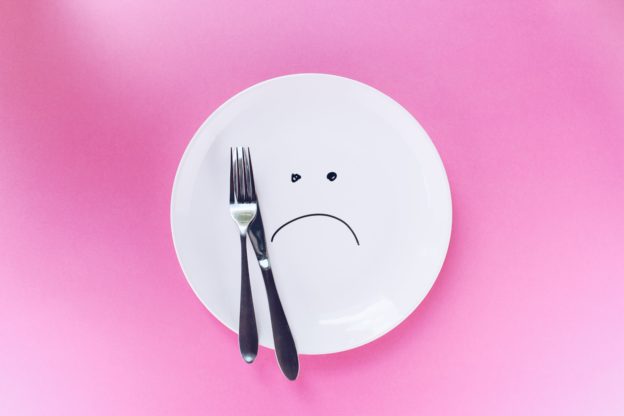What You Need To Know About The Most Common Eating Disorders

Content Warning: This article discusses eating disorders in detail, including the common symptoms and consequences. If you are living with an eating disorder, you can find help and resources at the National Eating Disorder Association Helpline (1-800-931-2237), which is available Monday-Thursday: 9 AM-9 PM EST and Friday 9 AM – 5 PM EST.
Eating disorders are a group of psychological conditions that revolve around the obsession with
eating, weight, food, and body shape. Though many people dismiss these disorders, the truth is
that they are very harmful and can even be fatal.
Because of the many misconceptions about these disorders, many people don’t know how to
identify them in themselves or their loved ones. This article will serve as your ultimate
guide to some of the most common eating disorders, including their signs and health effects.
Anorexia Nervosa
Though it is not the most common eating disorder, anorexia nervosa is the most well-known.
Someone with this eating disorder struggles with a warped self-image, often seeing themselves
as overweight even if they are not.
Though many people with anorexia are underweight, this itself is not a good indicator that
someone has anorexia. Anyone of any shape, weight, age, or gender can develop this disorder,
so weight itself is not a determining factor.
Though many people are more familiar with the restrictive form of anorexia (where the person
uses strict diets, caloric restrictions, and exercise to lose weight), there is a binging and purging
subtype as well. This subtype aims to lose weight through purging by laxatives, vomiting,
diuretics, or extreme exercise.
Though people are often very dismissive of this disorder, it can be deadly. In extreme cases,
patients may experience thinning of their bones, infertility, brittle hair and nails, heart failure,
organ failure, and death.
Some of the most common symptoms of anorexia nervosa include:
- Restricted eating habits
- An obsession with thinness and losing weight
- Intense fear of gaining weight
- Distorted self-imageObsessive or very pre-occupied with thoughts about food and dieting
- Rarely eats in public or around anyone else
Bulimia Nervosa
Bulimia nervosa is another eating disorder that the general public is well-acquainted with.
People with this condition will eat enormous amounts of food in a small window of time. Then,
they will purge the food they consume in order to avoid gaining weight.
During these episodes, a person may not feel in control of their eating habits or actions. Though
this sounds similar to the binging and purging subtype of anorexia, the difference between the
two conditions is that people with bulimia typically maintain an average weight. In contrast,
people with anorexia typically lose an enormous amount of weight throughout their condition.
The common symptoms of bulimia nervosa include:
- Recurring binging and purging episodes
- Feeling a lack of control when it comes to eating habits and binging/purging episodes
- Self-esteem is dictated by body shape and weight
- Intense fear of gaining weight
- Distorted self-image
Frequent purging episodes may also result in some side effects. They include:
- Inflamed throat
- Worn tooth enamel
- Tooth decay
- Acid reflux
- Severe dehydration
- Swollen salivary glands
Like anorexia, bulimia is very dangerous. Severe cases may result in a stroke or heart attack
because of the imbalance of electrolytes that come from not digesting food.
Binge Eating Disorder
Though not as well known as the previous two disorders, binge eating disorder is the most
prevalent eating disorder. The symptoms are similar to bulimia and the binge eating form of
anorexia in that this condition revolves around binge eating.
What distinguishes this condition from the others is that people with this condition do not use
purging behaviors to try to lose or maintain their weight. Therefore, people with this condition
tend to be overweight or obese.
Common symptoms of binge eating disorder include:
- Eating enormous amounts of food until uncomfortably full
- Eating in secret
- Feeling a lack of control when binging
- Feeling shame, guilt, or disgust when talking or thinking about their binging behaviors
People with this eating disorder often consume foods that are unhealthy or have no nutritional
value. Therefore, they are at a higher risk of heart disease, stroke, diabetes, and similar
conditions. As a result, this condition can be just as fatal as the previous two.
Pica
Pica is the most unique eating disorder on this list. It is not characterized by how much food
someone consumes but by the objects they consume. People with this condition will eat items
that are not considered food nor provide any nutritional value. Some examples of this may
include ice, soil, rocks, paper, hair, cloth, detergent, and chalk.
Because people with this condition consume non-edible objects, this disorder can be quite
dangerous. People with pica may poison themselves, experience frequent infections and
internal injuries, and live with nutritional deficiencies. As you can imagine, this condition can be
quite fatal.
Final Thoughts On Eating Disorders
Eating disorders are not conditions to be ignored or dismissed. They are serious conditions, and
more people need proper education on them. If you believe that you or someone you love may
have an eating disorder, call the National Eating Disorder Association Helpline at 1-800-931-
2237 for more help. If you’re interested in learning more about eating disorders, you can click
here for further reading.
The post is developed in partnership with BetterHelp.
******
Ms Career Girl strives to provide valuable insights you can use. To see more from our columnists and guest authors, check these out!

